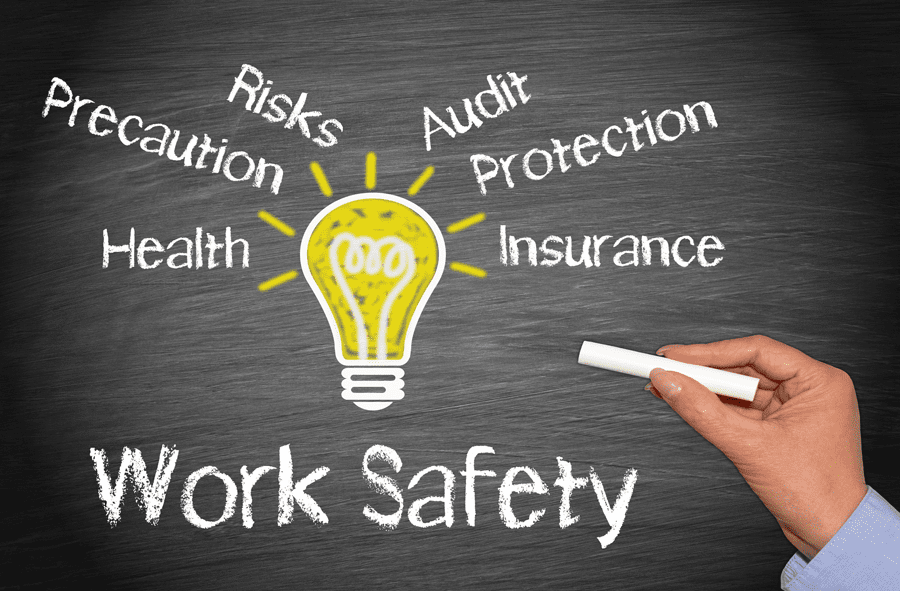As a safety professional, I find myself attempting to arm the workforce with weapons of safety assurance. They vary in coverage, but each plays an important role in protecting individuals from harm. Stop Work Authority, commonly known as SWA, offers maximum results and is often disregarded and even overlooked, allowing hazardous activity to invoke disastrous results.
SWA is a valuable insurance policy and could not be simpler to utilize. Anyone witnessing an unsafe act has the right and duty to stop it, if an unsafe outcome is believed to be the result. It is commonly not even considered when an employee is unsure of a situation. That key word “unsure” should serve as a catalyst for exercising SWA immediately. Questioning often leads to disaster.
With its simplistic nature, one question continually surfaces. If SWA is a tool that can be utilized by anyone, no matter their title, then why is it often overlooked?
Failure to Use
As a safety professional, I have often found that in most cases, SWA could have been exercised and eliminated an incident from occurring. After each incident, no matter its severity, I found myself coaching, teaching and even preaching about how SWA could have provided a more positive outcome. So, because of an incident, we safety professionals go into re-training mode and re-teach the SWA program. It always amazed me how many heads shook in agreement during that re-training period, along with most of the class finishing my sentences on the subject matter.
It provided me reassurance, and even a sense of pride, how my students and my coworkers truly understood the vital concept of SWA and acknowledged they understood how and when to use it. As a bonus, I continued the crusade by including discussions on SWA within monthly safety meetings. I also coached in the field and made sure SWA was acknowledged on JSAs. Safety Alerts were distributed within the company to further communicate the importance of SWA.
I felt my bases were covered and the message presented throughout the company. That sense of completion would later erode as another incident would occur, leaving me scratching my head, asking why. Management’s support was present. Training had been conducted. Testing had even been given to ensure everyone fully understood the concept. I was still left asking why it failed.
I began a robust research quest. Surely I was not alone in the issues my team was experiencing. I felt that quite possibly other safety professionals had not only had similar situations arise, but also had developed an antidote.
The Bystander Effect
According to the ohsonline.com article, “Stop Work Authority and the Bystander Effect,” individual action can be persuaded by the presence of others. The larger the group or, in my case, the crew, the less likely action would be taken. So, in a crew of two employees, it can be hypothesized that SWA would be more likely to be invoked in comparison to a crew size of five or more.
Reviewing past incident reports and investigation notes, I discovered that incidents where SWA was not utilized, crew makeup consisted of five or more individuals. As astonishing as this revelation proved to be, I continued my research because, after all, attempting to shrink crew sizes to increase the probability of SWA use was not an option. Some job tasks required a variety of skill sets and large numbers of individuals to perform the work.
Diffusion of Responsibility
According to that same article, large groups are often met with a phenomenon where individual responsibility decreases in the event of a situation needing action. Because others are witnessing the same event, the individual feels there are adequate numbers to properly respond to the action at hand. So, when discussing an unsafe act, one individual, if not all, may think to themselves that they do not have to act as someone else in the group will.
I found this concept equally interesting and frightening. Using the same cases involving five or more employees where SWA could have been implemented, I held loose conversations with some of the crew members who were involved. I asked why they did not act if they felt the harmful activity was problematic at the time. I was told by each employee that they thought someone else was going to do something, and furthermore, they did not respond because if those others did not see an issue, then they obviously were incorrect in their assessments.
The revelation was shocking. In most cases, no one acted on their initial assessment because they lacked the personal confidence. If their coworker did not see an issue, they each thought they had to be mistaken. It was an easy hypothesis to provide since they each thought the same, no action was taken and a harmful outcome materialized. The only saving grace was that for each of these incidents that were reexamined, no one was seriously injured or perished.
Combatting the Psyche
While the research proved fascinating and horrifyingly accurate, the bigger issue at hand was determining how to combat such behavior. Fortunately, I have had both the pleasure and good fortune to be surrounded by intelligent and dedicated coworkers wherever I have been employed. Taking a team approach, we determined that coaching was the best route of action.
Coaching everyone in the crew and discussing the need for leadership at every level was the approach taken. While everyone is responsible for personal safety, each person, from the entry level technician to the project manager must be a leader. As we are all human, it is inevitable that someone will drop the proverbial ball. Anyone can pick it up and complete the play. Through leadership training and personal recognition that reinforces leadership confidence, individuals can overcome the Bystander Effect and Diffusion of Responsibility. While large budgets are often directed at group training, a personal investment in the individual goes a long way in ensuring the safety of all.
Nick Vaccaro is a freelance writer and photographer. In addition to providing technical writing services, he is an HSE consultant in the oil and gas industry with twelve years of experience. Vaccaro also contributes to SHALE Oil and Gas Business Magazine, American Oil and Gas Investor, Oil and Gas Investor, Energies Magazine and Louisiana Sportsman Magazine. He has a BA in photojournalism from Loyola University and resides in the New Orleans area. Vaccaro can be reached at 985-966-0957 or nav@vaccarogroupllc.com.
Oil and gas operations are commonly found in remote locations far from company headquarters. Now, it's possible to monitor pump operations, collate and analyze seismic data, and track employees around the world from almost anywhere. Whether employees are in the office or in the field, the internet and related applications enable a greater multidirectional flow of information – and control – than ever before.












